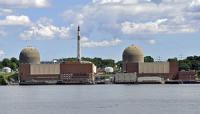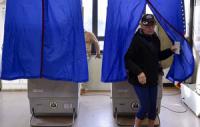-
Detailed look at decentralized water systems
The “decentralized” water system at the Center for Sustainable Landscapes (CSL) at Phipps Conservatory and Botanical Gardens, which treats all non-potable water on site, contributes to the net-zero building’s recognition as one of the greenest buildings in the world. However, research into the efficacy of these systems versus traditional treatment is practically non-existent in the literature. Thanks to a collaboration between Phipps and the University of Pittsburgh’s Swanson School of Engineering, researchers now have a greater understanding of the life cycle of water reuse systems designed for living buildings, from construction through day-to-day use.
-
-
Global entities come shopping for Israeli cybersecurity
As computer devices and Internet of Things (IoT) connectivity continue to break new boundaries and create changes to our lifestyle, new cybersecurity technologies to defend our tech-savvy lives are crucial. “We’re still at the beginning for the cyber arena. We still need the security solution for smart homes, we still don’t have security solutions for autonomous cars, or for connected medical devices or MRI machines, or for connected kitchen appliances. Every technology that will be introduced to our lives in the coming years will need a cyber solution,” says one expert.
-
-
Stopping human-made droughts and floods before they start
Alberta’s rivers are a main source of water for irrigated agriculture in Canada’s Prairie provinces. But climate change and increased human interference mean that the flow of these headwaters is under threat. This could have major implications for Canadian gross domestic product, and even global food security.
-
-
What caused the Flint water crisis
Flint, Michigan, continues to grapple with the public health crisis that unfolded as lead levels in its tap water spiked to alarming levels. Now the scientists who helped uncover the crisis have tested galvanized iron pipes extracted from the “ground zero” house. They confirm that the lead that had accumulated on the interior surface of the pipes was the most likely source of the lead contamination.
-
-
Microgrids spread globally
To a greater or lesser extent, every business needs access to reliable and economical sources of power. It is an additional bonus for some if that electricity can be generated using renewable sources. Modern technology allows businesses to meet these needs themselves, producing energy as well as consuming it locally, creating flexible networks known as “microgrids.” Microgrids are spreading globally, driven by technological, regulatory, economic, and environmental factors. Siemens helps build and get the best from these modern energy systems.
-
-
Why artificial intelligence could be key to future-proofing the grid
The expansion of renewable energy, mainly from wind and solar power, is a good thing — but one problem with this great expansion in renewables is they are intermittent, meaning they depend on weather conditions such as the wind blowing or sun shining. Unlike conventional power, this means they can’t necessarily meet surges in demand. Hence many press headlines in recent years about the “lights going out.” One solution to the problem is known as demand-side response. One aspect involves rewarding certain electricity consumers for reducing their usage at short notice. This can range from large industrial customers to smaller consumers using power for heating rooms, cooling, lighting or even refrigeration. Emerging artificial intelligence technologies look like providing answers to the challenges of effectively managing demand-side systems. To select the best participants, for example, grid operators will be able to use sophisticated machine-learning techniques to model the behavior of individual devices and battery storage units by reviewing data from smart meters and sensors.
-
-
New technique could lead to more efficient, safer uranium extraction
The separation of uranium, a key part of the nuclear fuel cycle, could potentially be done more safely and efficiently through a new technique developed by chemistry researchers at Oregon State University. The technique uses soap-like chemicals known as surfactants to extract uranium from an aqueous solution into a kerosene solution in the form of hollow clusters. Aside from fuel preparation, it may also find value in legacy waste treatment and for the cleanup of environmental contamination.
-
-
Earthquakes triggered by humans pose growing risk
People knew we could induce earthquakes before we knew what they were. As soon as people started to dig minerals out of the ground, rockfalls, and tunnel collapses must have become recognized hazards. Today, earthquakes caused by humans occur on a much greater scale. Events over the last century have shown mining is just one of many industrial activities that can induce earthquakes large enough to cause significant damage and death. Filling of water reservoirs behind dams, extraction of oil and gas, and geothermal energy production are just a few of the modern industrial activities shown to induce earthquakes. The only evidence-based way to limit the size of potential earthquakes may be to limit the scale of the projects themselves. In practice, this would mean smaller mines and reservoirs, less minerals, oil and gas extracted from fields, shallower boreholes and smaller volumes injected. A balance must be struck between the growing need for energy and resources and the level of risk that is acceptable in every individual project.
-
-
Salt on the earth
When ice and snow melt away into streams and groundwater, road salt goes with it. The Pennsylvania Department of Transportation is mindful of its salt use: It applies nearly 27,500 tons of salt every year to 779 miles of Erie County roads, including highways. Researchers have developed a map that shows elevated concentrations of salt along Trout Run, which flows into Fourmile Creek, which empties into Lake Erie, the primary source of drinking water for the 280,000 residents of Erie County.
-
-
Sea levels in U.S. Northeast to rise faster than global average
Sea level in the Northeast and in some other U.S. regions will rise significantly faster than the global average, according to a report released by the National Oceanic and Atmospheric Administration (NOAA). Moreover, in a worst-case scenario, global sea level could rise by about 8 feet by 2100. “Currently, about six million Americans live within about six feet of the sea level, and they are potentially vulnerable to permanent flooding in this century. Well before that happens, though, many areas are already starting to flood more frequently,” says one expert. “Considering possible levels of sea-level rise and their consequences is crucial to risk management.”
-
-
Our crumbling infrastructure
The U.S. Department of Transportation estimates that the nation’s highways and bridges face an $808.2 billion backlog of investment spending, including $479.1 billion in critically needed repairs. More than two-thirds of the nation’s roads and nearly 143,000 bridges are classified in “dire need” of repair or upgrades. U.S. ports are clogged and need dredging to improve the flow of goods; railroad tracks need modernizing; airport communications technology needs updating and expansion; and urban mass transit is old and inadequate. As president, Trump wants to rebuild America’s core; here are the likely smooth roads and potholes ahead.
-
-
Affordable water in the U.S.: A looming crisis
If water rates continue rising at projected amounts, the number of U.S. households unable to afford water could triple in five years, to nearly 36 percent, a new study finds. A variety of factors, ranging from aging infrastructure to climate change to population decline in urban areas, are making residents’ ability to afford water and wastewater services a burgeoning crisis.
-
-
NY’s Indian Point nuclear plant to close after many “safety events”

New York’s Indian Point nuclear power plant will close by April 2021, Governor Andrew Cuomo said on Monday. “For fifteen years, I have been deeply concerned by the continuing safety violations at Indian Point, especially given its location in the largest and most densely populated metropolitan region in the country,” Cuomo said. “I am proud to have secured this agreement with Entergy [the plant’s operator] to responsibly close the facility fourteen years ahead of schedule, to protect the safety of all New Yorkers.”
-
-
Changing rainfall patterns linked to water security in India
Changing rainfall is the key factor driving changes in groundwater storage in India, according to a new study. The study shows that changing monsoon patterns—which are tied to higher temperatures in the Indian Ocean—are an even greater driver of change in groundwater storage than the pumping of groundwater for agriculture.
-
-
DHS designate U.S. election infrastructure as a Critical Infrastructure Subsector

The Department of Homeland Security has added the U.S. election infrastructure to the list of protected critical infrastructure sectors of the economy. The move comes in the wake of the Russian government’s interference in the 2016 presidential election, which was aimed to help Donald Trump win the election. “I have determined that election infrastructure in this country should be designated as a subsector of the existing Government Facilities critical infrastructure sector. Given the vital role elections play in this country, it is clear that certain systems and assets of election infrastructure meet the definition of critical infrastructure, in fact and in law,” DHS secretary Jae Johnson said Friday:
-
- All
- Regional
- Water
- Biometrics
- Borders/Immig
- Business
- Cybersecurity
- Detection
- Disasters
- Government
- Infrastructure
- International
- Public health
- Public Safety
- Communication interoperabillity
- Emergency services
- Emergency medical services
- Fire
- First response
- IEDs
- Law Enforcement
- Law Enforcement Technology
- Military technology
- Nonlethal weapons
- Nuclear weapons
- Personal protection equipment
- Police
- Notification /alert systems
- Situational awareness
- Weapons systems
- Sci-Tech
- Sector Reports
- Surveillance
- Transportation
Advertising & Marketing: advertise@newswirepubs.com
Editorial: editor@newswirepubs.com
General: info@newswirepubs.com
2010-2011 © News Wire Publications, LLC News Wire Publications, LLC
220 Old Country Road | Suite 200 | Mineola | New York | 11501
Permissions and Policies
Editorial: editor@newswirepubs.com
General: info@newswirepubs.com
2010-2011 © News Wire Publications, LLC News Wire Publications, LLC
220 Old Country Road | Suite 200 | Mineola | New York | 11501
Permissions and Policies
